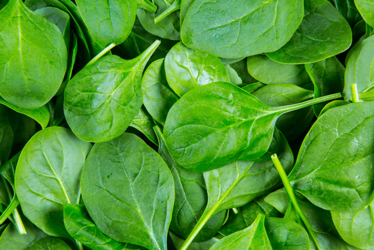Leafy greens are said to be good for the heart, but a group of investigators have given the phrase a new dimension with their study showing the use of spinach leaves as scaffolds for culturing cardiomyocytes (1). The research tackles a current cardiac bioengineering challenge: finding a biomimetic scaffold that can form vascular systems to deliver nutrients – and can also be scaled up for clinical use.
Keen to learn more about the germination and growth of the project, we speak with first author Joshua Gershlak of the Worcester Polytechnic Institute.
How did the investigation come about?
The collaboration started when a group of professors at Worcester Polytechnic Institute, the University of Wisconsin, and Arkansas State University sat down and found that there were a lot of similar issues when researching either plant or mammalian tissue. We pondered whether we could take queues from each kingdom to aid in the research of the other, leading to the idea of using plants as scaffolds for tissue engineering.
I started talking with Glenn Gaudette – primary investigator and professor of biomedical engineering at Worcester Polytechnic Institute – about the possibility of decellularizing plant tissue as a part of our new collaboration; our lab focuses on regenerating heart tissue, so the idea grew from there.

Why spinach?
To decellularize hearts, we place a needle through the aorta before flowing through solutions for the decellularization process. We wanted plant tissue reminiscent of the vascular networks seen in the human cardiovascular system, and struck on the idea of the vein system found in spinach leaves.
We performed decellularization on a wide variety of plant tissue types including the stems of parsley, sweet wormwood, and roots, but spinach has a long stem that is easily attached to a perfusion system, a good size to allow us to easily manipulate it in the lab, and it is relatively flat which is important when we were culturing the human cells on its surface.
Did you expect it to work so well?
Plant cells are very different from mammalian cells and have a very tough outer cell wall as a form of protection. So the relative ease with which the decellularization process occurred in the plants was unexpected. For a technique that works very well in mammalian tissue to also work as well and as quickly with these tougher cells is actually remarkable. Success in the next step – getting human cells to not only attach, but act normally while on this plant scaffold – was also incredible.
Cellulose, the major component of the leaf, is a widely studied biomaterial with known biocompatibility. But cellulose used in previous studies has typically been produced from bacteria and then purified; to see this more natural form of cellulose support normal human cellular function is amazing.
What do your findings mean for cardiac bioengineering?
To take an engineered tissue from the lab to the hospital, a vascular system is needed to provide the tissue with the proper oxygen and nutrients, especially on the microscale. Right now, fabrication techniques, such as 3D printing, aren’t capable of creating a proper vascular system – and that’s the major limiting factor affecting the clinical translation of engineered tissue. Using the naturally occurring vasculature in a leaf gives us new avenues to explore.
When a patient has a heart attack, there is a large non-functional scar left in the heart wall. Current surgical techniques, such as bypass surgery, reintroduce blood flow into the region but do not repair the scar. By building a vascularized piece of heart tissue using decellularized leaves, we would have the material needed to replace the scarred heart wall.
What’s next?
This work has been incredibly promising but one of the first points we need to address is the biocompatibility of the leaf after processing. Purified cellulose is known to be biocompatible, but as we are using cellulose straight from the ground, we need to understand what might happen if we were to implant the unprocessed leaf into a patient. Another major question is how to allow outflow from the leaf when used in the body; human bodies have both blood supply and removal – veins and arteries – but leaves have only one system. We hope to use multiple leaves to mimic both supply and removal.
- JR Gershlak et al, “Crossing kingdoms: using decellularized plants as perfusable tissue engineering scaffolds”, Biomaterials, 125, 13–22 (2017). PMID: 28222326.
Worcester Polytechnic Institute.















